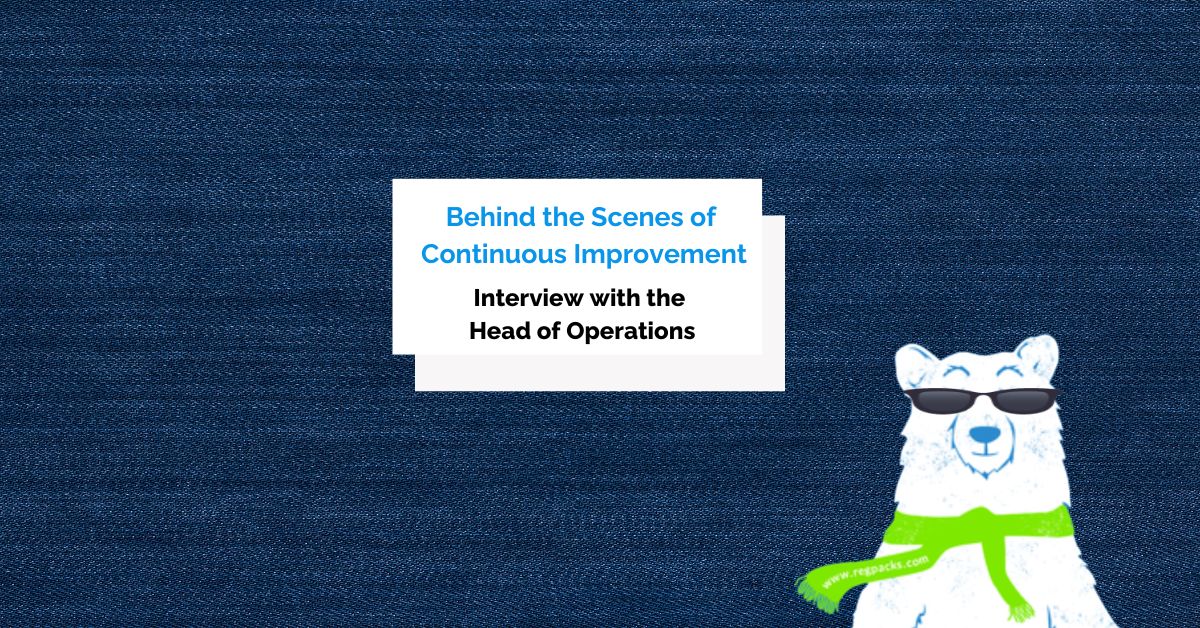Increased competition is a consistent trend across many industries, partly due to globalization and largely due to natural business growth. Consumers now have many options, making customer acquisition more costly and retention more challenging. If you get it wrong, they’ve got plenty of options.
So, your key to success lies in optimizing your customers’ experience, and that includes customer support during and after the sale. A strong support system helps you delight customers and maintain their loyalty, securing recurring revenue and helping your business evolve sustainably. And the best support offering also gives you a chance to poach unhappy shoppers from your competitors.
Two customer support elements to consider
No successful business doubts the importance of stellar customer support, but many struggle to achieve a robust customer service ecosystem. Many brands face operational challenges and struggle to streamline their support efforts, putting their customer experience at risk.
Businesses struggling with customer support can drastically improve their offering by:
- Gaining a deeper understanding of their customer’s needs, enabling brands to respond in turn.
- Leveraging the right technology, including support management software, automation, and artificial intelligence.
As your business scales, the complexity of customer support evolves in sync. Not only do support requests increase in volume, but managing and tracking them becomes tedious. Thus, establishing a tech-enabled, organized customer support system is crucial.
1. Understand the customer journey
Understanding how customers transition along their journey helps you serve them better at key touch points. Moreover, the knowledge encourages brands to take control over support services by mapping the customer journey.
Where mapping is concerned, consider which steps can provide your customers with the best experience. For example, your first line of support may be a chatbot to provide customers with self-service support. The second stage could be to initiate a live chat with human support, if the chatbot cannot resolve the query. And so on throughout the process.
Customer mapping tools come in a few flavors. If you have existing data, then services like Sketch and Adobe XD can be used to create layouts and workflows. These prototyping tools make it easy to visualize the customer journey, which helps many companies determine where to address shoppers with new content. If you’re building out this data, then you need heat mapping and other options that show how users move through your website and buy from you. Hotjar is a leader in the space and it has a good roundup of heat mapping and other tech that might be helpful here.
One thing to not overlook is how order fulfillment and customer service after delivery play a role in the customer journey. Your buyers aren’t done until they’re happy with using the product. In many cases, they’re not done until they decide whether or not to buy from you again. Map these journeys and final steps, with a special focus on seasonal buyers and other special occasions where you might need some added effort to create lifelong customers.
2. Create a knowledge base
In the interest of providing customers with more self-service options, creating a knowledge base is invaluable. Expanding your self-service offering reduces support costs and also helps you serve customers better. When creating your knowledge base, the best supporting material is your existing customer interactions. See what common questions your customers ask and compile detailed answers to them in your documentation. And for more straightforward questions, you can create a dedicated FAQ section on your website.
After creating your initial knowledge base, it’s also important to avoid stagnation. As your business and consumer trends evolve, your customer support needs may vary. Knowledge bases, whether FAQ sections or chatbots, should be updated in turn.
Tools here vary wildly. Make your selection based on how it will be used. Many eCommerce companies can get started best by looking for options designed to work with your base platform, such as Shopify or WooCommerce. That’s a good start if you want a chatbot to primarily deliver this information – you’re training the bot on the knowledge base, but customers don’t see it. If you’re building this out as an index, FAQ, or other guide on a web page, stick to HTML and development so that your page won’t break or face issues if the app or service has an update.
When you let customers browse these, tailor the layout to your audience. For example, this shopping cart creates pages not only for its features but also its integration partners. That’s especially useful because nearly all eCommerce stores use a variety of integrations to move data either between internal business units or to partners and manufacturers.
3. Solicit feedback
One of the most effective ways to identify customer support failings or limitations is to ask your customers. Soliciting feedback helps you better understand where customers are satisfied and where improvements need to be made.
When it comes to collecting feedback, don’t wait for customers to come to you with their concerns. Most won’t reach out to you until prompted. So, consider sending out a survey to collect responses about the quality of your customer support – many online brands include a survey response form at the end of live chat sessions by default.
Companies can start soliciting feedback through consumer engagement emails. This might be a follow-up after a sale, when someone abandons a cart, or when you’re starting up a new campaign. Consider tying reviews to a benefit such as getting a coupon – just don’t limit these to positive reviews. Ask on social and in other channels where you engage customers regularly.
Feedback helps you in two significant ways. First, it shows you where to improve. Second, it helps new customers trust your claims. Feedback and reviews build trust and loyalty. The right tools to ask for reviews will differ based on your audience and channel. However, one thing any company wants is a clear way for a customer to leave that feedback on a relevant sales page. Enable comments, reviews, and ratings to start generating trust.
In most cases, feedback is dominated by email campaigns or pop-ups immediately after a purchase. Build this out with CRMs like Salesforce or HubSpot so that you can create campaigns new buyers are automatically added to after a purchase. These tools are also useful for delivering updates and later purchase details. They’ve been especially helpful during recent years when many companies needed to send out shipping delay emails as global supply chains struggled.
4. Implement Help Desk Software
Outdated support management systems like shared inboxes complicate customer support for both your agents and customers. The result is a tedious experience for all involved parties.
Help Desk software overcomes these limitations by streamlining your customer support ecosystem. With a fully integrated support management system, agents know exactly where customers are along their journey, including which issues have been resolved and which are pending. Moreover, Help Desk software encourages transparency and accountability. Businesses can monitor which agents are performing best, and which are failing to satisfy your customer’s requests.
Implementing Help Desk software is a necessary step towards establishing a seamless, customer-first support system. Base the solution on what can integrate with your store and supports the channels and agents that you need. Many cloud options allow you to have agents around the globe, making it easy to always have someone available for those 24/7 shoppers.
Once you have an idea of your budget, need, and how the tool is deployed for use, look at options like Help Scout, Olark, Pure Chat, LiveChat, or HubSpot Live Chat.
5. Automate
Automating your customer support offers a myriad of benefits, including reduced human error, minimal waiting times, fewer support costs, and the ability to provide customers 24/7 support. This is achieved by reducing human-to-human interaction at various touch points by automating query routing, ticket tagging, and even responses. Again, you can meet customers with a conversational AI-powered chatbot as a preface to live chat interactions.
However, automating your customer support isn’t as simple as installing the right software. The success of support automation relies on automating the right processes at key touchpoints. Thus, the first step is to understand your customer’s needs and the nature of their support requests by analyzing customer feedback and support requests.
This information gathering then fuels your knowledge base and helps you implement an automation layer at crucial stages in your customer’s journey. Ticket assignment is perhaps the simplest example of automating a customer’s support transition – when a customer places a request, your automated system assigns it to an agent from the relevant department. This routing can only be achieved successfully by understanding the nature of your customer’s requests.
Automation capabilities vary wildly. So, instead of providing a list of tools that may not be relevant, here are a few questions you can use to guide what automation and AI options to consider:
- What are you spending time on that you’re not good at or takes too long?
- Are there processes that are costing you sales or created refund requests?
- Where do your agents and support teams struggle?
- Can you answer the most common questions with standard order information?
- Are there any services or processes your customers wish they could do without having to contact an agent? Do they want to be self-sufficient?
One last word
The evolution of consumer expectations presents new challenges to growing businesses, however, technology has also evolved to help brands deliver better experiences. So although streamlining your customer support may seem daunting, strategic planning and the right tools can help you optimize your offering.
You can streamline and enhance your customer service by:
- Collecting and analyzing customer feedback to identify areas of improvement and opportunities for automation.
- Expand your self-service support options by creating knowledge bases and using chatbots.
- Automating processes at key touchpoints to improve your customer’s experience and minimize waiting times.
- Leverage Help Desk software to streamline internal operations and help your agents manage requests efficiently.
Knowing your customers’ woes and needs helps you plan a better customer support strategy, but technology and software are crucial for effective execution.
—
Jake Rheude is the Vice President of Marketing for Red Stag Fulfillment, an eCommerce fulfillment warehouse that was born out of eCommerce. He has years of experience in eCommerce and business development. In his free time, Jake enjoys reading about business and sharing his own experience with others.



















